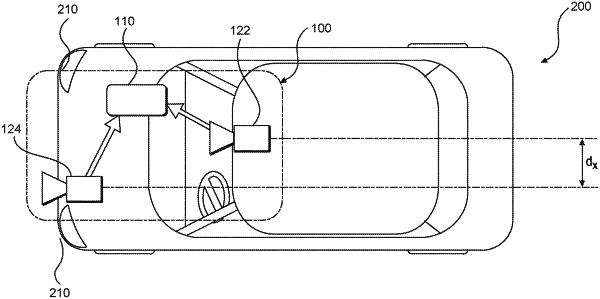| CPC B60W 60/00276 (2020.02) [B60W 30/0956 (2013.01); B60W 60/00274 (2020.02); G01C 21/3602 (2013.01); G05D 1/0231 (2013.01); G05D 1/0257 (2013.01); G05D 1/0278 (2013.01); G06V 10/84 (2022.01); G06V 20/56 (2022.01); B60W 2420/403 (2013.01); B60W 2420/52 (2013.01); B60W 2552/53 (2020.02); B60W 2554/00 (2020.02); B60W 2554/20 (2020.02); B60W 2554/4029 (2020.02); B60W 2554/4041 (2020.02); B60W 2554/4045 (2020.02); B60W 2554/60 (2020.02); B60W 2554/802 (2020.02); B60W 2554/804 (2020.02); B60W 2556/50 (2020.02)] | 24 Claims |

|
1. A navigational system for a host vehicle, the navigational system comprising:
at least one processing device comprising circuitry and a memory, wherein the memory includes instructions that when executed by the circuitry cause the at least one processing device to:
receive a first output captured by a first sensor onboard the host vehicle, wherein the first output is associated with a first portion of an environment of the host vehicle;
receive a second output captured by a second sensor onboard the host vehicle, wherein the second output is associated with a second portion of the environment of the host vehicle, and wherein the second portion at least partially overlaps with the first portion;
identify a representation of a target object in the first output;
determine, based on the first output, a detected driving condition associated with the target object and whether the detected driving condition triggers at least one navigational constraint, the at least one navigational constraint being configured to limit one or more navigational actions available to the host vehicle;
based on a determination that the at least one navigational constraint is triggered by the detected driving condition, cause at least a first adjustment to the one or more navigational actuators of the host vehicle in response to the target object; and
based on a determination that the at least one navigational constraint is not triggered by the detected driving condition, determine whether a representation of the target object is included in the second output at a location in the second output corresponding to a location of the target object in the first output, and:
when the representation of the target object is included in the second output, cause at least a second adjustment to one or more navigational actuators of the host vehicle in response to the target object, the second adjustment being different from the first adjustment; or
when the representation of the target object is not included in the second output, forego any adjustments to the one or more navigational actuators of the host vehicle in response to the target object.
|